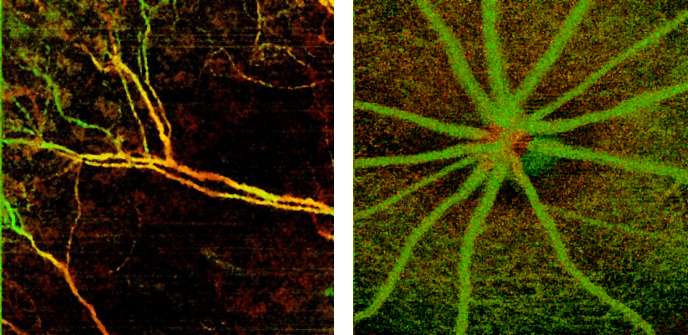Label-free angiography technique based on optical coherence tomography

Wasatch Photonics Inc., a leading provider for gratings, spectrometer and optical coherence tomography instrumentation, on Monday (March 21), launched a new imaging device, WP MicroAngio, for high-resolution angiographic imaging for research and original equipment manufacturer (OEM) applications.
MicroAngio
technology allows visualization of blood vessels at microscopic level without using external contrast agents. The device, based on variation of
MicroAngio technique could provide an advantage over other angiography techniques like optical fluorescence and X-ray fluoroscopy. Unlike such techniques, MicroAngio doesn't require injection of external contrast agents that can interfere with the physiology of the sample. In addition, the technique provides 3D localized information compared to the 2D data obtained from most other existing techniques.
OCT-based angiography techniques are already finding use in clinical ophthalmology. MicroAngio is expected to provide the same capability for animal research applications in ophthalmology and extend it to other medical research applications.
"MicroAngio is the result of our commitment to provide researchers and industry partners with the latest technology at an affordable price," said Michael Sullivan, general manager at Wasatch Photonics. "It is very important that researchers have access to the same technology that is being used in clinics to correlate biological studies with the real-world pathology."
Nishant Mohan, director of Product Management and Marketing systems division at Wasatch Photonics, said the OCT-based angiography is likely to expand the application domain of this already fast growing technology.
"Our goal with MicroAngio is to provide a flexible tool that can be used in an optimal fashion for a wide range of applications," he said. "MicroAngio comes with customized probes and fixtures for small animal retinal, dorsal window chamber and brain imaging. We also will provide a suite of algorithms for data analysis essential for angiographic imaging."
MicroAngio's OCT angiography software will allow users to choose from processing based on only intensity or phase of the signal, or a combination of both. The system will also provide techniques to allow for motion correction that are essential for artifact free imaging. See here for more information about MicroAngio.
OCT was invented at the Massachusetts Institute of Technology in the early 1990s, and has become the largest revenue generator in the optical imaging market. The technique has gained wide acceptance in ophthalmology and intravascular imaging, particularly after the introduction of Fourier domain techniques in the early 2000s. Addition of angiography modality to OCT is expected to give the technology another quantum leap.
Provided by Purdue University




















